Thermaltake Commander MS-II
MS-II doesn’t look much different from the
aforementioned MS-I model. We can only be able to find out some tiny changes
such as the additional external 5.25-inch slot and the side window that has
different shape.
But these 2 models indeed are much more
different than what you can guess from the first look.
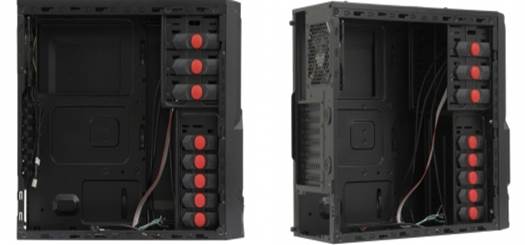
Product
photo
You can easily see a completely different
set of quick fastening screws and a new chassis. We will discuss in details
right below.

Front
connectors
The I/O connectors not only include a USB
2.0 port but also a USB 3.0 one. Its end is connected to the head of the
motherboard. We have never seen USB 3.0 ports which is compatible to the
computer cases with the affordable price before. (There’s a product from Antec,
but it costs more).
The connectors on the front cover are
placed reasonably: 2 USB ports are separated by the headphone and micro jacks,
so you can easily plug 2 big USB devices into them at the same time. Note that
each cable for connecting the USB port on the computer case requires having 2
headers on the motherboard.
The power and drive indicators are s little
too bright.
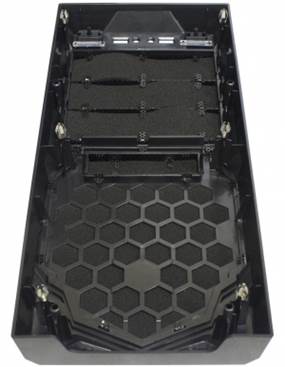
Dust
filter
The front is similar to the MS-I with the
plastic cover, the foam rubber protective layer and the metal grille outside.
It’s tightened by 6 flower-shape metal screws, each of which has 4 petal-shape
screws.
Unlike the common products with reasonable
price, MS-II has the shield on the back with the reusable thumbscrews.
The holes for the pipes on the liquid
cooling system are sealed by the rubber buttons. These buttons are incredibly
hard and difficult to be bended toward their petal-shape screws.
Compared to MS-I, the accessories here include
several cables and a power adaptor from a 3-pin fan connection with a 4-pin PATA
power connector.
In MS-I, the motherboard is mounted on the
bulges on the mounting face. MS-II, it’s kept safely thanks to the supportive
pins. To insert the last part of it, there’s a special tip for the way of using
a multi-tip among the accessories that come with the computer case, but anyhow
it’s not easy to fasten the screws into the pins on the top and the back of the
case.
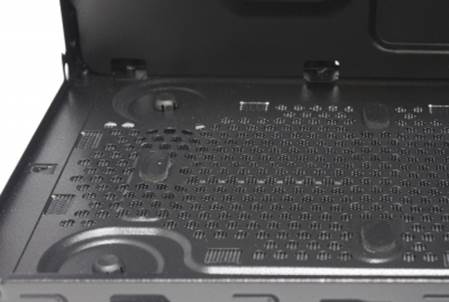
Product
structure
The pads used for absorbing the vibrations
seems to be under the grille of the PSU fan, not under the PSU cover when the PSU
is fitted with its facing-down fans. This seems not good.
You don’t need to take your PSU out or even
open the computer case to clean the dust stuck on the filter because its end
sits under the bottom cover. Besides the PSU, it also protects the optional
fans on the bottom.
The filters here are much worse than those
in MS-I. The perforated sheet of flexible plastic blocks more air flows than of
a grille.
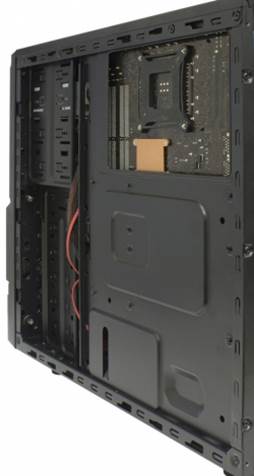
The
side of the case
MS-II lacks a dedicated cable compartment,
so you can’t put all of the cables into a main frame of the chassis. The inner
design of MS-II seems to be slightly outdated, which is the same to the
products of 5 years ago or even more.
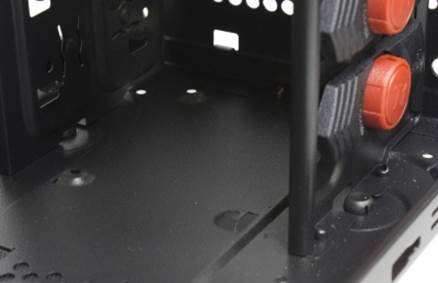
The
position for the 2.5inch drive
As in MS-I, there’s a position for the 2.5inch
SSD right under the main disk rack which is designed for 5 3.5-inch devices (along
with some other devices if you don’t want to use the exterior 3.5-inch slot).
And just like in MS-I, the set of screws
for quick fastening can’t fix the HDDs solidly. In fact the screws are very
identical, though they have different shape. So, as with MS-I, you will prefer
the good-quality old screws.
It’s the same to the screws for 5.25-inch
devices.
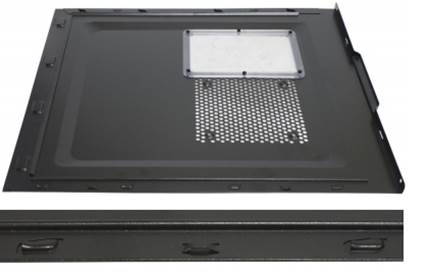
The
side panel of the product
The side panels have a lot of hard fixing
points as a special trait of the cheap-pricing computer case. The window is the
only unusual feature for the product with this price.
Because there’s no cable behind the
motherboard to press the side panels together its latter can easily put into
the right position.
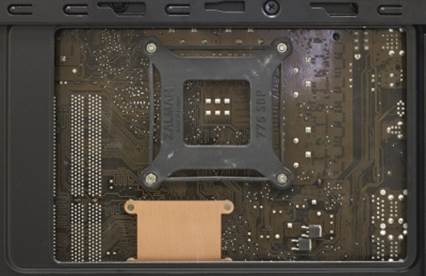
The
position for placing the CPU cooler
The cut-out part of the CPU cooler is
bigger than in Commander MS-I, allowing you to remove your CPU cooler without
taking the motherboard out of the chassis regardless of the proper position of
the CPU socket. CPU power cable can’t be all pushed behind the mounting side of
the motherboard.
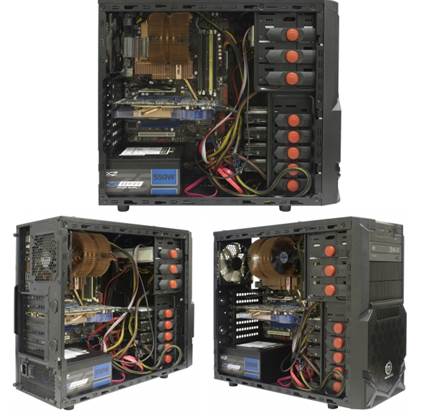
The
photo of the case when installing
MS-II is somewhat more inconvenient that MS-I
when talking about your system-installing process, and the result seems less
tidy and neat because the cables can’t he hidden. Alternatively, you can tie
orderly the cables into bunches by using the belts, the accessories which don’t
have the appearance of the MS-I model.
So, MS-II shows some signs for the
intention of cutting cost. It has the quick-fastening screws for all the slots.
The holes for the liquid cooling system on the rear are rubberized. The frame
of the expansion card can be reused.
So, both MS-I and MS-II has their own
strong and weak points, but we’ll find out in our practical test to see which
one is more preferred.

The
product’s fan
The ventilation system is as similar as in MS-I
except for having only 1 fan which is placed at the front panel. Though, the
default fan works at higher speed. It’s about 700 RPM ở at silent ode of the
motherboard. Combined with the interior space which seems to be larger (due to
having no cable compartment), this leads to many positive effects for the
ventilation system.
At every fan position, except for the 2
sides, they’re all equipped with a dust filter. The filter on the top IS
perforated piece of plastic which weakens the airflows of the fan. Anyhow, the inefficient
dust protective layer is not the signature sign of the primary case.

Completely
assembled case
The assembling way of Commander MS-II seems
good, but the LED indicators seem to be a little too bright.
|
Advantages
·
USB 3.0 supporting
·
Affordable price
·
Stunning appearance
·
Harder-than-expected chassis
·
Can accommodate a lot of hard drives
·
Offering a lot of position to place the fans
·
Good dust-resistant ability
Disadvantages
·
Made from slightly thin metal plates
·
Not having dedicated cable compartment
·
Too bright Led indicators
·
Only 1 default fan (but it highlights the
entire case system)
Thermaltake Commander MS-II’s technical standards
·
Dimension, mm: 195x423x481
·
Compatibility: ATX, microATX, Mini-ITX
·
Exterior slot: 3x5.25”;
1x3.5”
·
Interior slots: 5x3.5”;
1x2.5”
·
External ports: 1x USB
3.0; 1x USB 2.0; 2 audio jacks
·
Fan: 1x120 mm
|